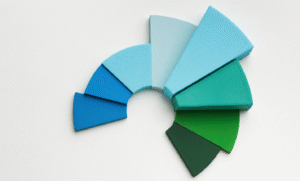Introduction
Retention and churn live on opposite sides of the same coin, yet teams often treat them like unrelated metrics. Retention tells you who stays, while churn tells you who leaves. Both speak to the same customer journey, the same product value, and the same business health. When you learn to read them together, patterns jump out and actions become obvious. You stop guessing and start steering.
This article is a practical walkthrough that compares retention rate and churn rate, explains the exact formulas, and shows how to use cohorts, curves, and segmentation to find drivers of loss and growth. I will keep things simple, direct, and useful. I will also share a few war stories and a couple of jokes because numbers are nicer when they smile back. By the end, you will know what to measure, how to interpret the signals, and where to focus to move the needle.
TLDR: Retention vs Churn at a glance
Retention rate measures the percentage of customers who remain with you over a defined period. Churn rate measures the percentage of customers who leave during that same period. Both must use the same period and the same denominator logic or your insight will wobble.
Retention rate formula
Customers at end of period minus new customers acquired during the period, divided by customers at start of period, times one hundred.
Churn rate formula
Customers lost during period, divided by customers at start of period, times one hundred.
Pick a consistent period such as month or quarter, and decide how you treat trials, grace states, and reactivations. Write those rules down. Future you will thank present you.
Why these metrics matter for growth
Retention compounds value. Each month that a customer stays is another month of revenue and a stronger chance of expansion. This compounding effect makes retention the silent force behind sustainable growth. Churn does the opposite. It creates a leak that demands constant new acquisition just to stay level. That is why teams who chase top of funnel alone feel tired.
Churn and retention also shape unit economics. Retention improves lifetime value, and that improves payback on customer acquisition cost. Finance leaders watch net revenue retention and gross revenue retention because they summarize these dynamics cleanly. If you want to present a credible growth story, you must control both acquisition and churn. If you only fuel the engine and never patch the leaks, you will smell smoke.
Core definitions and exact formulas
Customer retention rate
Use this when you want to understand the persistence of logos, not revenue. The clean version is this. Customers at end of period minus new customers acquired during the period, divided by customers at start of period, times one hundred. This removes the effect of new sales so you see pure retention among the cohort that already existed at the start.
Customer churn rate
This is also called logo churn. Customers lost during period, divided by customers at start of period, times one hundred. Be precise about the start count. If you include trials that did not convert, the number will look worse but will not represent paying customer behavior. I prefer to calculate logo churn on paying customers only and track trial conversion separately.
Revenue churn versus customer churn
Revenue churn looks at monthly recurring revenue lost from downgrades and cancellations. It can move differently from logo churn. You can lose a few large accounts and keep many small ones, and revenue will drop while logos look stable. Conversely, you can lose many small accounts and replace the revenue with a single expansion. Watch both, compare both, and never trust only one view.
Gross revenue retention and net revenue retention
Gross revenue retention measures how much starting revenue you keep after churn and contraction, excluding expansion. Net revenue retention includes expansion and shows whether your existing base grows by itself. GRR below one hundred percent signals loss within the base. NRR above one hundred percent signals that expansion offsets the loss. Both are valuable, and both should be reported together.
Data you need before you start
Good churn analysis starts with clean data models. You need a user or account table with unique ids, plan information, start and end dates, and current status. You need a subscription table with billing cycle, amount, currency, and changes. You need event data that marks meaningful actions in product sessions. Finally, you need a clear definition of active. That could be weekly active users or completion of a core task at least once in a period.
Event tracking does not need to be perfect on day one. Pick a small set of events that map to activation, core value, and long term engagement. Tie events to user ids and account ids, and timestamp everything. You can always add more events. You cannot make up a timestamp later. I learned that the hard way once and I still wince.
Method one: Cohort analysis
Cohorts are your workhorse for retention and churn. Group customers by the month or week they joined, then track their retention over subsequent periods. This reveals the shape of decay and the effect of changes in onboarding, pricing, or product quality. Compare cohorts across months to see whether the curve moves in the right direction.
You can also create behavioral cohorts. For example, compare users who completed onboarding within three days to those who took longer. Or compare users who invited a teammate during week one against those who did not. Behavioral cohorts tell you which actions predict long term retention. Once you see the pattern, the roadmap writes itself.
Method two: Retention curves and hazard moments
Plot retention over time for a cohort and you get a curve. Most products show a steep drop early, then a flattening tail. The steep part is where you have hazard moments. Maybe day two returns are weak. Maybe week three is where usage fades. The curve tells you where to look. The tail shows you the long term value.
Once you spot a hazard moment, ask what behavior should happen there. For example, a project tool might need users to invite teammates by day two. An analytics tool might need a first dashboard by week one. Map the required behavior, then build prompts, help, and product nudges that lead users to that action. I like to call these habit checks. They can turn a cliff into a gentle slope.
Method three: Segmentation to find drivers of churn
Not all churn is equal. Segment your retention and churn by plan, price, billing cycle, channel, geography, and feature usage. A monthly plan might churn more than an annual plan. A freemium tier might churn faster than paid tiers but still serve as a growth engine. Different acquisition channels can deliver very different retention. Some channels bring curious visitors. Other channels bring determined buyers.
Segment by product usage as well. Identify the features that correlate with long term retention. Users who set up alerts might stay longer. Teams that integrate with your API might remain sticky. Once you know which features matter, you can encourage those actions during onboarding and product tours. Segmentation turns a gray blob into a map with landmarks.
Predicting churn with leading indicators
You do not need machine learning on day one. Start with simple leading indicators that you can track and act on. Here are the usual suspects. Usage frequency drops. Recency increases. Depth of usage falls. Support tickets increase and satisfaction falls. Payment issues appear. A downgrade occurs and a cancellation follows. These signals are visible with basic queries and a straightforward scoring model.
You can assign points to each risk signal and define alert thresholds. When a customer crosses a threshold, trigger an outreach play. Offer help, share a guide, or schedule a quick session. Keep the outreach helpful and personal. People do not churn because someone cared too much. They churn when nobody noticed the gap.
Benchmarks and targets with context
Benchmarks can help but they can also mislead. A consumer app with a light habit will look different from an enterprise platform with long contracts. A small business tool with monthly billing will show higher churn than a large enterprise tool with annual contracts. Compare yourself with peers in your model, price point, and sales motion. Even better, compare your current period to your past periods by segment.
A simple rule works well. Choose a single target per quarter for retention improvement, and make it segment specific. For example, increase month one retention for self serve users by three percentage points. Or reduce logo churn among monthly subscribers by one percentage point. Small moves compound. Celebrate them.
Playbooks to reduce churn
Everyone asks for tactics, so here is a focused list you can put to work.
-
Clarify the aha moment and ensure it happens fast. Design onboarding that guides users to the first value action within the first session or day.
-
Build habit loops. Send timely prompts that nudge users back when frequency drops. Use email or in product reminders with links that open to the task.
-
Proactive support matters. Flag at risk accounts and reach out with real help before they open a ticket. A quick personalized video can work wonders.
-
Review pricing and packaging. Annual plans reduce churn and improve focus. Bundle sticky features at the right tiers and avoid confusing complexity.
-
Save the cancel. Add a short exit survey, show targeted offers, and guide users toward alternatives like a pause or a lighter plan when appropriate.
-
Win back with grace. A simple message two weeks after cancellation with a summary of new value can bring people back. Keep it short, respectful, and warm.
Pick one playbook per month and measure the effect on specific cohorts. If it works, codify it. If it does not move the curve, try the next one. Consistency beats brilliance.
Reporting templates and dashboards
A good retention and churn dashboard does not need to be fancy. It needs to be consistent, trusted, and owned. Start with four widgets. A monthly cohort table that shows retention through twelve months. A retention curve that compares the last three cohorts. A churn waterfall that starts with monthly recurring revenue, subtracts churn and contraction, adds expansion, and lands on ending revenue. A segment view that shows churn and retention by plan and channel.
Review the dashboard weekly with product, growth, support, and finance. Agree on a single change you will test and one at risk segment that you will support. Track those items the next week. Over time this ritual creates a habit of retention ownership. Teams that own retention build better products and calmer businesses.
How to measure this in PrettyInsights
PrettyInsights, our web and product analytics platform, was built with these workflows in mind. You can define events for activation and value, then build a weekly or monthly cohort report with one setup flow. The cohort view shows retention and churn side by side, which makes trend reading faster. You can save segments by plan, channel, or key feature usage, then pin them to dashboards for easy review.
Alerts complete the loop. Create a simple risk score using usage drops and billing signals, then set an alert for any account that crosses a threshold. You can send the alert to your team channel or your help desk. Combine this with a lightweight outreach play and you will catch problems before they turn into cancellations. If you want a clean starting point, try the retention starter dashboard. It ships with the essential views and you can customize it in minutes. I have timed it.
Common mistakes and how to avoid them
One common mistake is mixing different denominators across periods. If you count trials in one month and exclude them in the next, your graph will make drama from nothing. Keep the definition stable and document any change. Another frequent mistake is looking at only logo churn or only revenue churn. You need both to understand the story. A single number can hide a problem or hide a success.
A third mistake is treating correlation as causation. If power users read the docs, it does not mean that reading the docs creates power users. A fourth mistake is bunching all customers together. Without segmentation, you average away the important truths. Finally, some teams chase perfect data before they act. Start with good enough and iterate. Perfect arrives late and rarely helps the quarter.
FAQs
How do you calculate churn rate accurately
Use paying customers at the start of the period as the denominator. Count only real losses during the period as the numerator. Exclude trials, fake accounts, and billing grace states unless you are deliberately measuring trial churn. State the period length and keep it consistent. That is the whole secret.
What is a good retention rate for software
It depends on price, audience, and sales motion. Consumer tools with light habits will retain differently from enterprise tools with long commitments. Use peer comparisons as rough guides, then set targets against your own historical performance by segment. Up and to the right is the only universal rule.
When should I use cohort analysis versus funnel analysis
Use cohorts to understand retention over time based on when people joined or what they did. Use funnels to analyze conversion within a sequence of steps such as signup to activation. You will need both views. Cohorts show the long arc. Funnels show the near term path.
How fast can I reduce churn
Faster than you think, slower than you want. Tactics like better save flows and proactive support can move numbers within a month. Deeper product changes that improve the habit loop take longer. Make small wins now while you build the big wins next.
Glossary
Churn rate is the percentage of customers who cancel within a defined period.
Revenue churn is the percentage of revenue lost from churn and contraction within a period.
Logo churn is another term for customer churn.
Retention rate is the percentage of customers who remain with you over a period.
Gross revenue retention shows how much starting revenue you keep excluding expansion.
Net revenue retention shows how your base changes including expansion.
Cohort is a group of customers who share a start time or behavior.
Hazard moment is the time when drop off is most likely.
Activation is the first meaningful action that demonstrates early value.
Win back is a re engagement campaign that targets former customers.
Putting it all together with an example
Imagine you start a month with one thousand paying customers. During the month you add two hundred new customers and you lose eighty. Your retention rate for the month would be one thousand one hundred and twenty minus two hundred, divided by one thousand, which equals ninety two percent. Your churn rate would be eighty divided by one thousand, which equals eight percent. If you ended with more revenue than you started with due to expansions, your net revenue retention could exceed one hundred percent even with eight percent logo churn.
Now segment that example. If sixty of the lost accounts are monthly plan subscribers from one channel, you have a clear target. Improve the onboarding for that channel, encourage annual plans, and add proactive support. Rerun the cohort after a month. If the new cohort retains three percentage points better, the long term impact will be large. Small changes at the start often snowball into lasting value.
Next steps and resources
Start by writing your definitions. Decide how you treat trials, reactivations, downgrades, and grace states. Publish the rules where everyone can find them. Next, build a simple cohort table and a retention curve for the last six months. Add a churn waterfall that reconciles revenue movements. Review these views weekly with clear owners. Retention is not a side project. It is the business.
Then turn insight into action. Choose one playbook, apply it to one segment, and measure the effect in cohorts. If you want an easy way to get going, set up PrettyInsights. Define your activation event, build a monthly cohort report, save your key segments, and add churn alerts for at risk accounts. When your team can see the curve and feel the alerts, the work becomes focused and energizing.
Conclusion
Retention rate and churn rate are two views of the same reality. Retention shows the value you deliver and the habits you create. Churn shows the friction that still exists and the promises that fall short. Treat them as a pair, not as rivals. Use cohorts to see time, curves to see shape, and segments to see cause. Act on what you learn and measure again. That is the loop that builds durable growth.
You do not need every perfect event and every perfect dashboard to begin. Start with the cleanest numbers you can trust. Add one analysis each week. Apply one playbook to one segment. Over a quarter, you will see clearer curves and calmer forecasts. Over a year, you will see a stronger base and a happier team.



